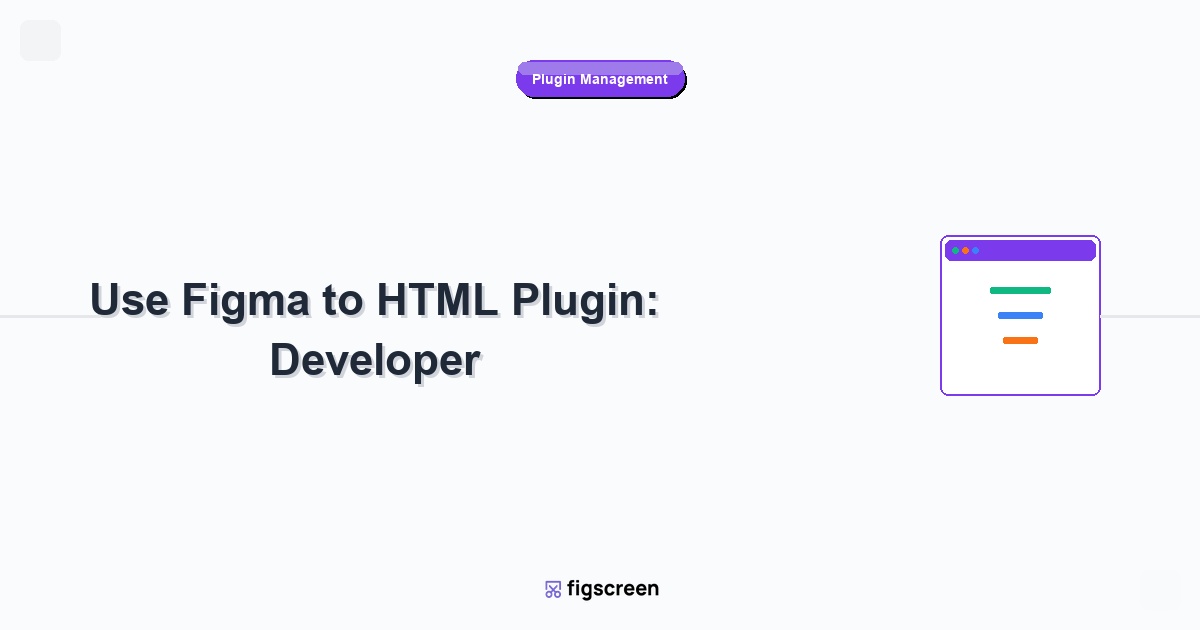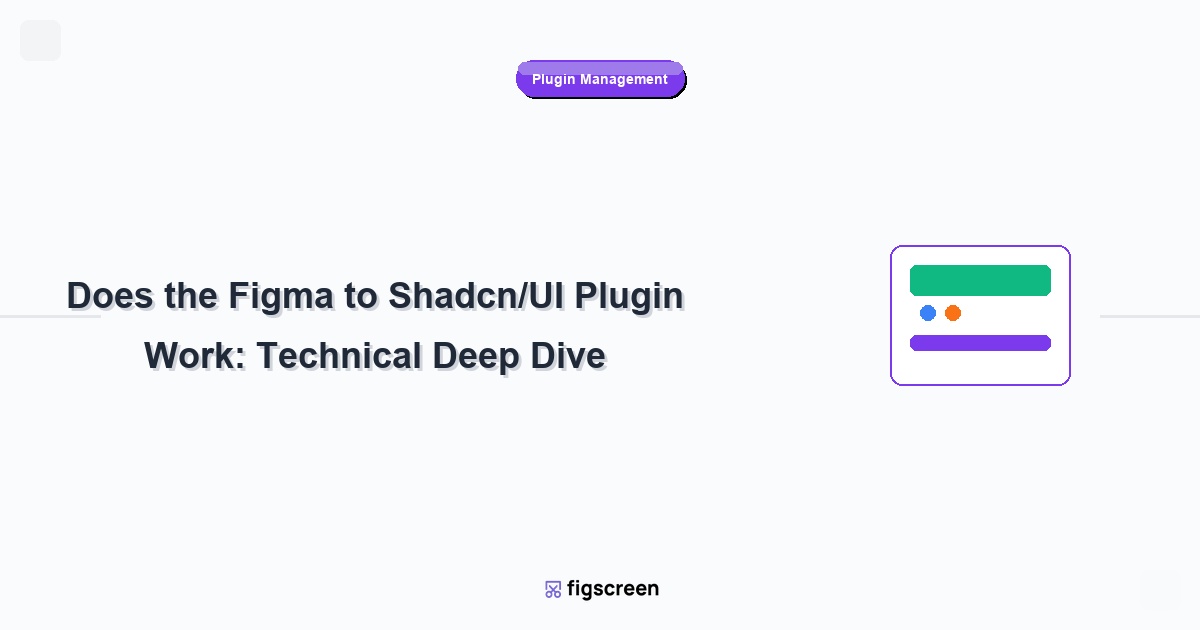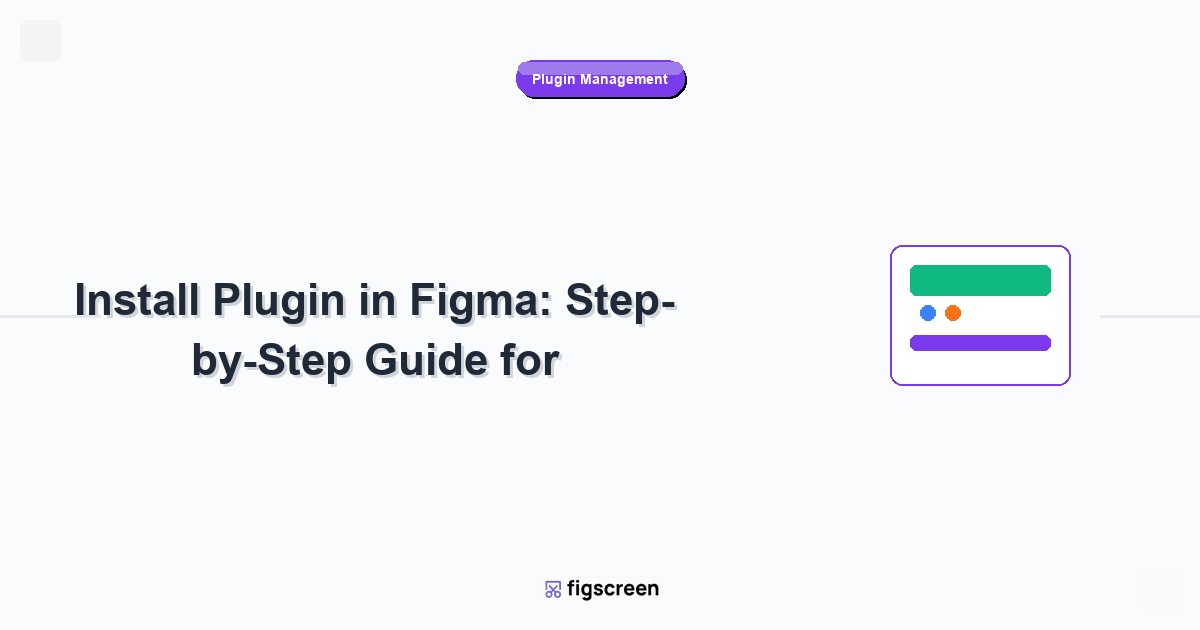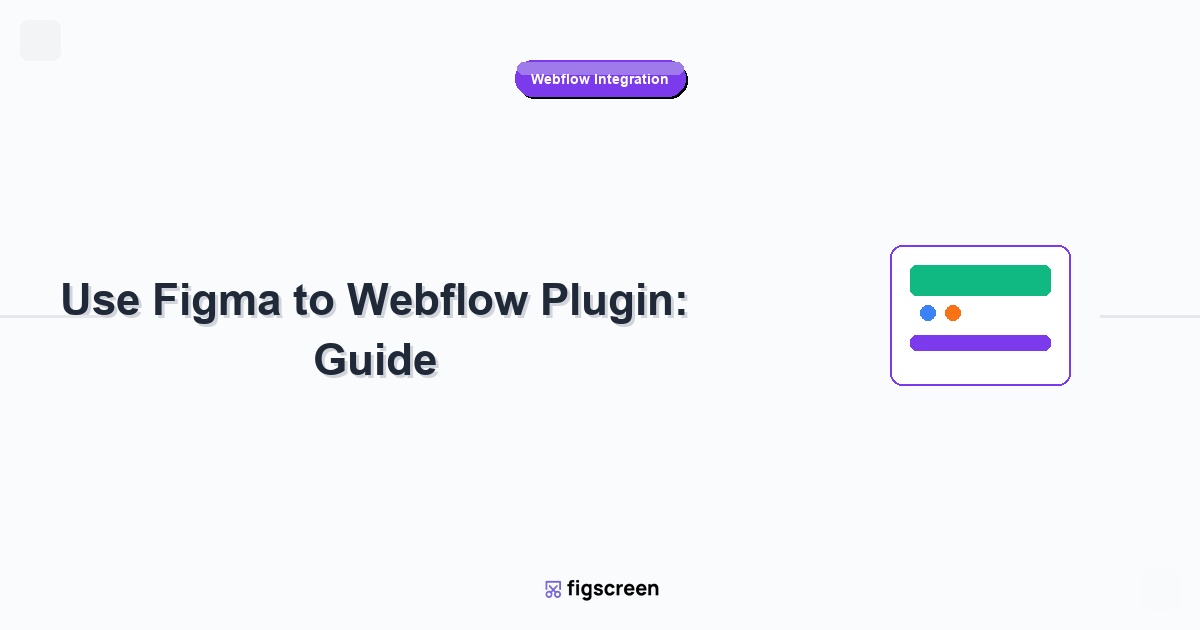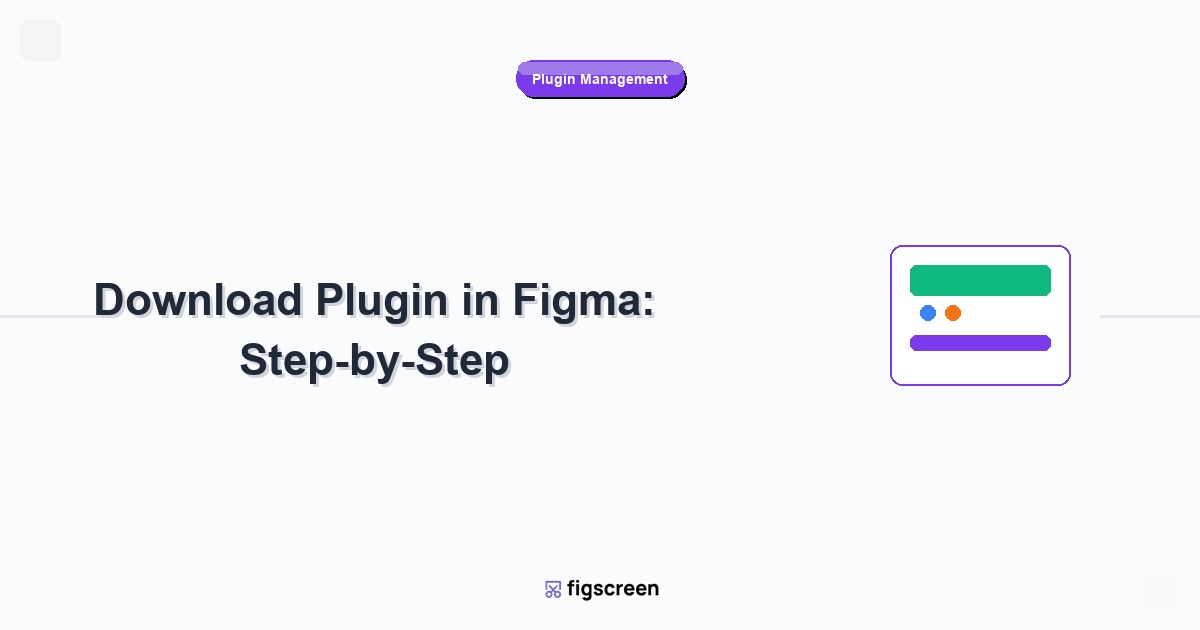The landscape of Figma to HTML conversion has evolved dramatically in 2025, with advanced plugins now generating production-ready code that developers can use with minimal modification. Unlike basic export tools covered in our Webflow integration guide, HTML plugins offer complete control over code generation, supporting modern frameworks and development workflows.
Why Figma to HTML Plugins Are Game-Changers in 2025
Modern Figma to HTML plugins have transcended simple code generation to become sophisticated development tools that bridge the design-development gap:
- Production-Ready Code: Generate clean, maintainable HTML, CSS, and JavaScript that developers can deploy directly
- Framework Integration: Support for React, Vue, TypeScript, and modern development frameworks
- Design System Compatibility: Automatic integration with Tailwind CSS, Material UI, and component libraries
- Responsive Automation: Intelligent conversion of Figma’s Auto Layout to responsive CSS Grid and Flexbox
- Developer Workflow Integration: Direct export to VS Code, GitHub, and development environments
- Interactive Prototype Support: Convert Figma prototypes to functional code with interactions
2025 Advantage: Current plugins use AI to optimize code generation, automatically detecting design patterns and applying best practices for clean, semantic markup.
Top Figma to HTML Plugins for 2025
Based on current development trends and community feedback, these plugins lead the HTML generation landscape:
1. Locofy: The Professional Choice
Locofy has established itself as the premium solution for Figma to HTML conversion, offering enterprise-grade features and exceptional code quality.
Key Locofy Features:
- Multiple Framework Support: HTML, React, Vue, TypeScript, and Next.js
- Tailwind CSS Integration: Automatic utility class generation with proper naming
- Component Libraries: Support for Material UI, Ant Design, and custom component systems
- Advanced Responsiveness: Intelligent breakpoint management and responsive design
- Code Optimization: Clean, modular code with proper component architecture
- Developer Tools: VS Code integration, GitHub sync, and Storybook export
Best Use Cases for Locofy:
- Production web applications requiring clean, maintainable code
- React and Vue projects with complex component hierarchies
- Teams using modern CSS frameworks like Tailwind
- Projects requiring design system integration
2. Anima: Advanced Interaction Support
Anima excels at preserving complex interactions and animations during the Figma to HTML conversion process.
Key Anima Features:
- Interaction Preservation: Maintains Figma prototype interactions in generated code
- Animation Support: Converts transitions and micro-interactions to CSS animations
- Multiple Export Options: HTML, React, Vue with comprehensive styling
- Real-time Collaboration: Live preview and sharing capabilities
- Advanced Effects: Supports complex visual effects and design patterns
Best Use Cases for Anima:
- Interactive prototypes requiring functional code
- Landing pages with complex animations
- Marketing sites needing rich visual effects
- Projects where design fidelity is paramount
3. Builder.io: Visual Development Platform
Builder.io combines code generation with a visual development platform, offering ongoing content management capabilities.
Key Builder.io Features:
- Visual Editing: Continue editing designs after code generation
- Content Management: Built-in CMS for dynamic content
- Performance Optimization: Automatic code splitting and optimization
- A/B Testing: Built-in testing and analytics capabilities
- Multi-framework Support: React, Vue, Angular, and vanilla JavaScript
4. Figma Dev Mode: Built-in Code Generation
Figma’s native Dev Mode provides built-in code generation capabilities integrated directly into the Figma interface.
Dev Mode Advantages:
- Native Integration: No external plugins required
- Real-time Updates: Code automatically updates with design changes
- Developer Handoff: Comprehensive specs and asset delivery
- Variable Mapping: Design tokens translate to CSS custom properties
Step-by-Step: Using Locofy for HTML Generation
This detailed walkthrough demonstrates the complete Locofy workflow, representing best practices applicable to most HTML generation plugins:
1Install and Setup Locofy
Following our plugin installation guide, add Locofy to your Figma workspace. After installation:
- Launch Locofy from your installed plugins
- Create a Locofy account or sign in with existing credentials
- Connect your preferred development environment (VS Code, GitHub, etc.)
- Configure your framework preferences (React, Vue, HTML)
2Prepare Your Figma Design
Proper design preparation is crucial for optimal code generation:
Layer Organization
- Use descriptive layer names: Names become CSS classes and component names
- Group related elements: Logical grouping translates to semantic HTML structure
- Apply consistent naming conventions: Use camelCase or kebab-case consistently
- Remove unnecessary layers: Clean up hidden or redundant elements
Auto Layout Configuration
- Use Auto Layout extensively: This creates responsive flexbox and grid layouts
- Set proper constraints: Fix, fill, and hug settings determine responsive behavior
- Configure spacing consistently: Use consistent padding and margin values
- Test responsiveness: Preview different screen sizes in Figma first
Component Architecture
- Create reusable components: Components become reusable code modules
- Use component properties: Boolean and text properties become component props
- Organize component libraries: Well-structured libraries translate to organized code
- Test component variants: Ensure all variants work properly before export
3Configure Code Generation Settings
Locofy offers extensive customization options for code generation:
Framework Selection
- HTML + CSS: For static websites and simple projects
- React: For interactive web applications
- Vue: For Vue.js projects
- TypeScript: For type-safe development
Styling Configuration
- Tailwind CSS: Utility-first CSS framework
- CSS Modules: Scoped CSS for component-based architecture
- Styled Components: CSS-in-JS for React projects
- Custom CSS: Traditional stylesheet approach
Component Library Integration
- Material UI: Google’s Material Design system
- Ant Design: Enterprise-focused component library
- Chakra UI: Simple and accessible components
- Custom Libraries: Your own component system
4Generate and Export Code
With your design prepared and settings configured:
- Select elements: Choose the frames or components to convert
- Review generated structure: Locofy shows a preview of the HTML structure
- Customize component mapping: Adjust how Figma elements map to HTML elements
- Configure responsive breakpoints: Set custom breakpoints if needed
- Generate code: Click “Generate Code” to create your HTML/CSS/JS
- Review and download: Inspect the generated code and download files
5Integrate with Development Workflow
Modern plugins integrate directly with development tools:
VS Code Integration
- Direct export: Send code directly to VS Code projects
- File organization: Automatic folder structure creation
- Component imports: Proper import/export statements
- Live preview: Preview generated components in development server
GitHub Sync
- Repository integration: Commit code directly to GitHub repositories
- Branch management: Create feature branches for design updates
- Pull request automation: Automatic PR creation for design changes
- Version control: Track design-to-code changes over time
Advanced HTML Generation Techniques
Semantic HTML Structure
Ensure your generated code follows semantic HTML best practices:
Proper Element Selection
- Use semantic tags: Configure plugins to generate <header>, <nav>, <main>, <article>
- Accessibility attributes: Ensure ARIA labels and roles are included
- Heading hierarchy: Maintain proper H1-H6 structure
- Form elements: Use appropriate input types and labels
Code Quality Optimization
- Class naming conventions: Use BEM, utility-first, or component-based naming
- CSS organization: Maintain logical stylesheet structure
- Component modularity: Create reusable, maintainable components
- Performance optimization: Minimize CSS and optimize images
Responsive Design Implementation
Ensure your generated code works across all devices:
Breakpoint Strategy
- Mobile-first approach: Start with mobile layouts and scale up
- Logical breakpoints: Use content-based rather than device-based breakpoints
- Flexible units: Prefer relative units (rem, em, %) over fixed pixels
- Container queries: Use modern CSS container queries where appropriate
Layout Techniques
- CSS Grid: For complex two-dimensional layouts
- Flexbox: For one-dimensional layouts and component alignment
- CSS Subgrid: For nested grid layouts (modern browser support)
- Intrinsic sizing: Let content determine layout where appropriate
Comparing Plugin Approaches
Code Quality Comparison
| Plugin | HTML Quality | CSS Organization | JavaScript Framework | Learning Curve |
|---|---|---|---|---|
| Locofy | Excellent | Very Clean | React, Vue, TypeScript | Moderate |
| Anima | Good | Good (may need cleanup) | React, Vue, HTML | Steep |
| Builder.io | Good | Platform-optimized | React, Vue, Angular | Moderate |
| Figma Dev Mode | Basic | Reference only | Code snippets | Easy |
Workflow Integration Comparison
- Locofy: Best for production applications requiring clean, maintainable code
- Anima: Ideal for interactive prototypes and marketing sites
- Builder.io: Perfect for content-heavy sites needing ongoing management
- Dev Mode: Great for developer handoff and specifications
Troubleshooting Common Issues
Code Quality Problems
When generated code needs improvement:
HTML Structure Issues
- Excessive nesting: Simplify Figma layer hierarchy before export
- Non-semantic markup: Configure plugins to use semantic HTML elements
- Accessibility problems: Review and add ARIA attributes post-generation
- Invalid markup: Validate HTML and fix any syntax errors
CSS Organization Problems
- Redundant styles: Use CSS optimization tools to remove duplicates
- Specificity issues: Reorganize selectors for proper cascade
- Responsive breakpoint conflicts: Review and adjust media queries
- Performance issues: Minimize CSS and optimize loading
Design Translation Issues
When designs don’t translate properly to code:
Layout Problems
- Responsive behavior: Check Auto Layout settings in Figma
- Spacing inconsistencies: Use consistent spacing values in design
- Alignment issues: Verify component alignment in Figma
- Overflow problems: Test content with varying lengths
Visual Fidelity Issues
- Font rendering: Ensure web fonts are properly loaded
- Color accuracy: Check color space and browser compatibility
- Image quality: Optimize images for web delivery
- Effect support: Some Figma effects may not translate directly
Best Practices for Team Workflows
Design-Development Collaboration
Establish clear processes for design-to-code workflows:
Design Handoff Protocol
- Design review: Developers review designs before code generation
- Technical feasibility: Assess complex interactions and effects
- Performance considerations: Discuss optimization requirements
- Accessibility requirements: Plan for accessibility compliance
Code Review Process
- Generated code review: Always review auto-generated code
- Optimization opportunities: Identify areas for manual improvement
- Testing requirements: Plan for cross-browser and device testing
- Documentation needs: Document any manual modifications
Quality Assurance
Maintain high standards for generated code:
Testing Checklist
- ✅ HTML validates without errors
- ✅ CSS follows team conventions
- ✅ Responsive design works across breakpoints
- ✅ Accessibility standards are met
- ✅ Performance benchmarks are achieved
- ✅ Cross-browser compatibility verified
- ✅ Interactive elements function properly
Advanced Integration Workflows
CI/CD Integration
Integrate Figma-to-HTML workflows with continuous integration:
Automated Deployment
- Git hooks: Trigger builds when design files are updated
- Code generation automation: Automatically generate code from design changes
- Testing pipelines: Run automated tests on generated code
- Deployment automation: Deploy passing code to staging or production
Design System Integration
Connect HTML generation with design system workflows:
Component Library Sync
- Design token mapping: Map Figma variables to code tokens
- Component consistency: Ensure generated components match library standards
- Documentation automation: Generate component docs from Figma descriptions
- Version synchronization: Keep design and code versions aligned
Future-Proofing Your Workflow
Stay ahead of evolving HTML generation capabilities:
Emerging Technologies
- AI-powered optimization: Plugins increasingly use AI for better code generation
- WebAssembly integration: Faster processing and more complex transformations
- Real-time collaboration: Live sync between design and code changes
- Advanced accessibility: Automatic accessibility compliance and testing
Skill Development
Enhance your HTML generation capabilities:
- Learn modern CSS: Stay current with Grid, Flexbox, and new CSS features
- Understand JavaScript frameworks: Better integration with React, Vue, and Angular
- Study design systems: Improve component architecture and reusability
- Practice optimization: Develop skills in performance and accessibility optimization
Conclusion
Figma to HTML plugins have matured into sophisticated development tools that can generate production-ready code. The key to success lies in proper design preparation, choosing the right plugin for your needs, and maintaining quality standards throughout the process.
Locofy leads in code quality and development integration, while Anima excels at interaction preservation and visual fidelity. Builder.io offers unique content management capabilities, and Figma’s native Dev Mode provides seamless integration for developer handoff.
Remember that generated code is a starting point, not a final product. Always review, test, and optimize the output to ensure it meets your project’s specific requirements for performance, accessibility, and maintainability.
🎯 What’s Next?
Now that you understand HTML generation workflows:
- 🏠 Explore no-code options with Webflow integration
- ⚡ Learn modern component systems like Shadcn/UI
- 📐 Master wireframing workflows for better design preparation
